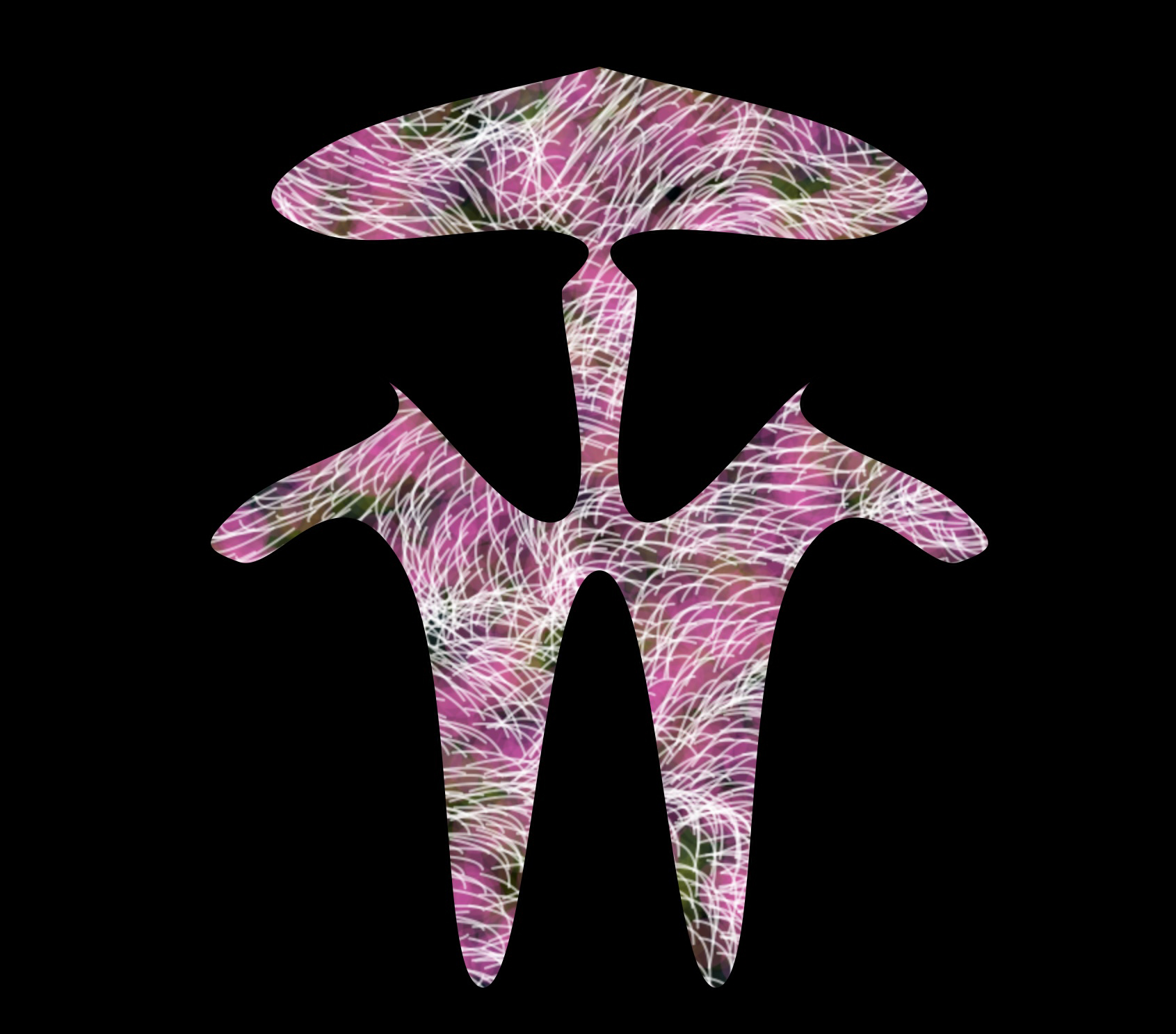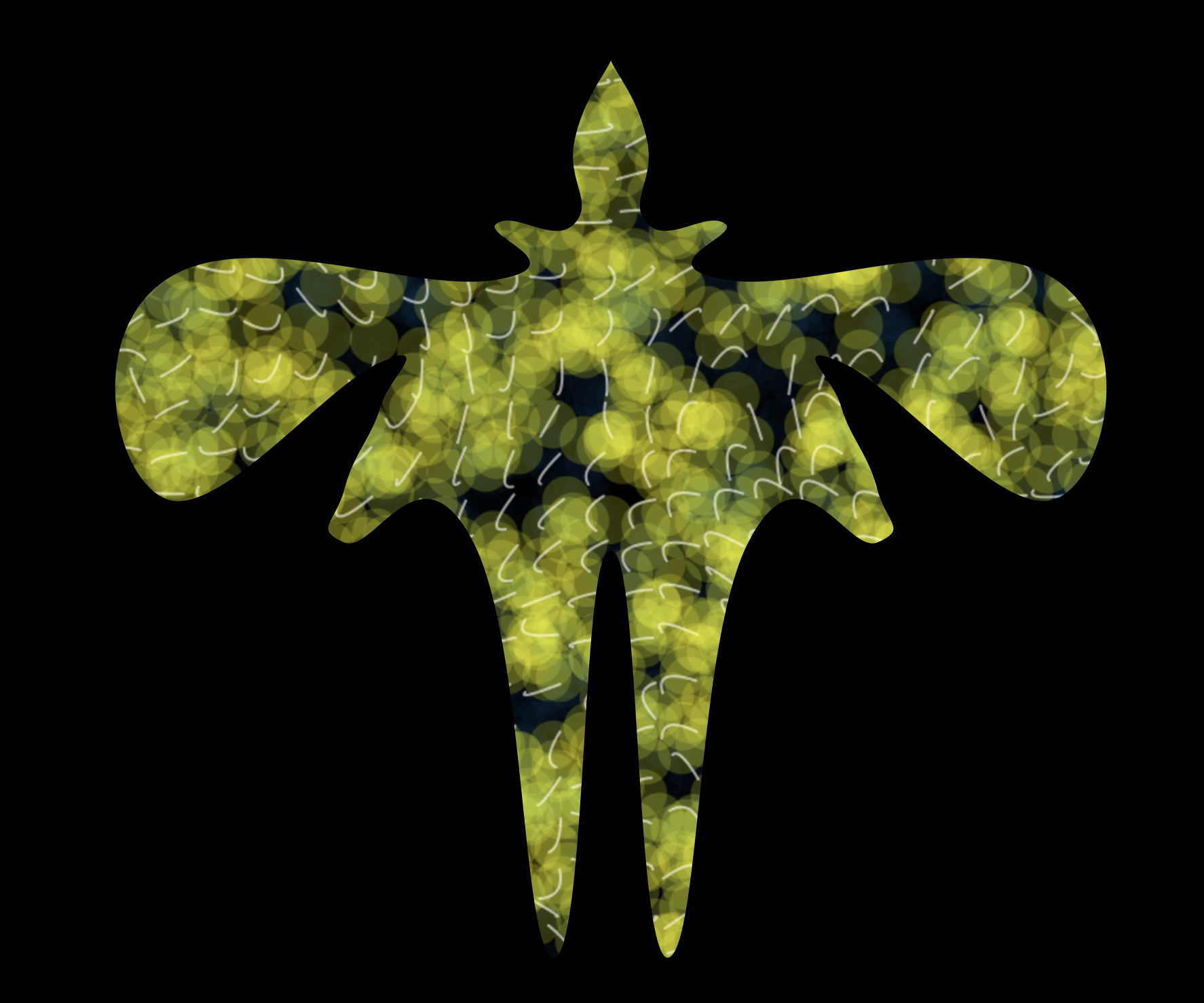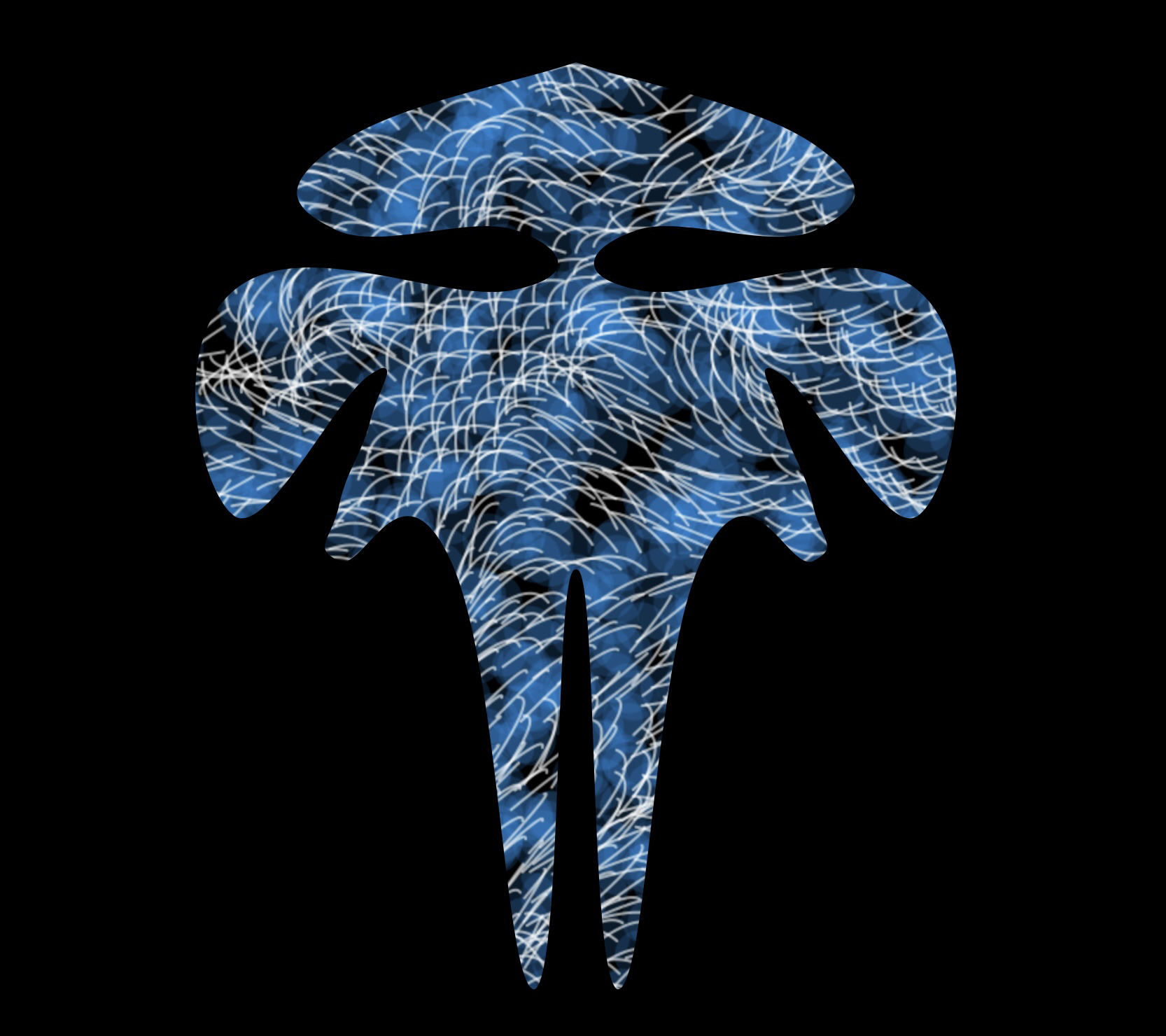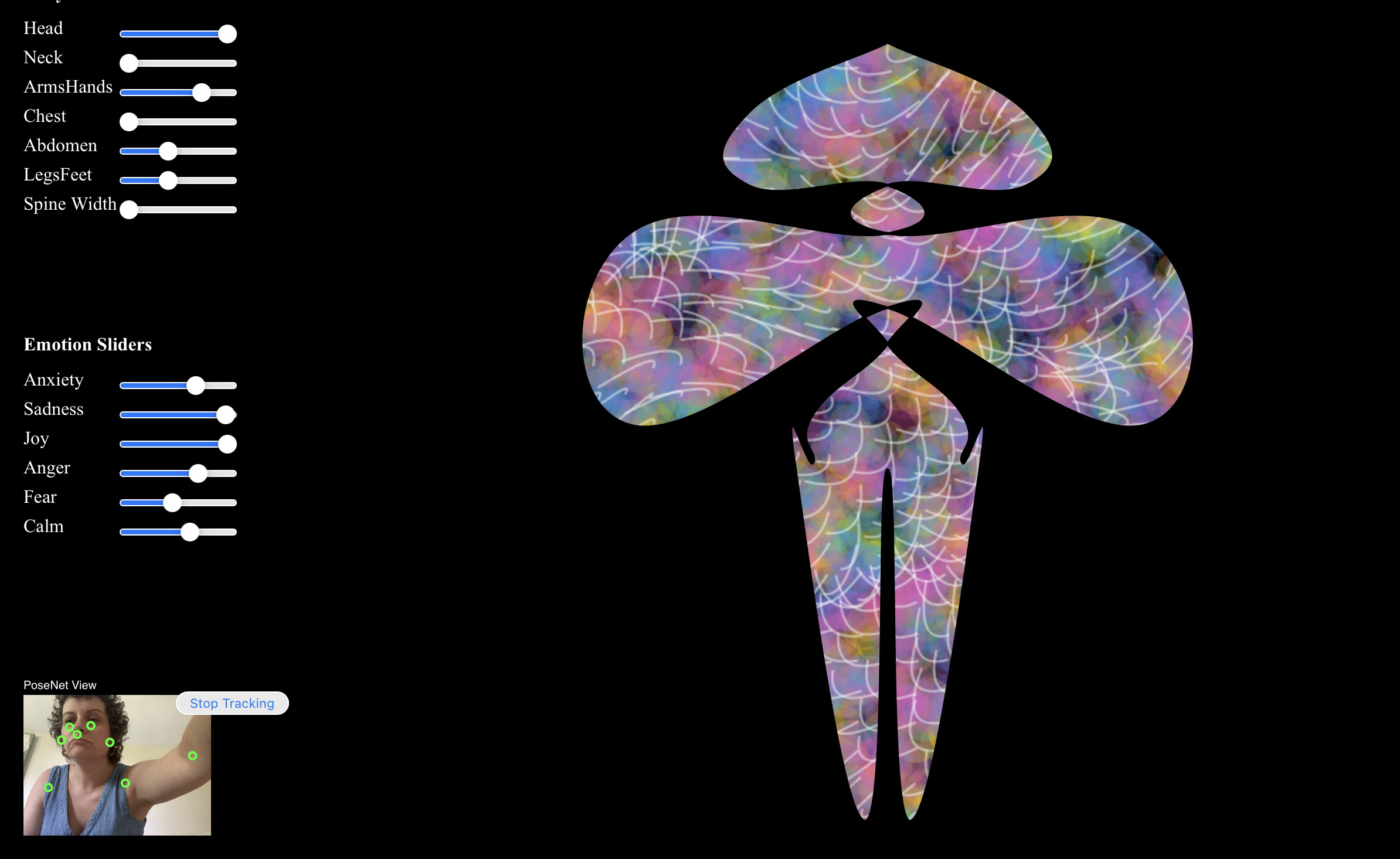




Energy Bodies is an interactive movement-capture installation that translates bodily expression into a dynamic, living visualization. Created by information designer, professor, and researcher Renée Walker and expressive arts therapist Carrie Powell, the project explores how inner sensations, emotions, and gestures can become data—revealing the energetic patterns that shape human experience.
Using open-source pose estimation software (PoseNet) and a custom-built visual system, participants’ movements are tracked and transformed into fields of shifting color, line, and motion. Each gesture becomes data, each change in posture a visual phrase. The resulting “energy body” reflects real-time interplay between physical motion and emotional tone—an aesthetic visualization of embodied presence.
Grounded in somatic psychology, movement analysis, and interaction design, Energy Bodies draws on the somaesthetic stance in Designing with the Body¹ and on data-as-material perspectives from data physicalization (Bae et al.; Rogers and colleagues, e.g., Houben et al.’s “Physikit”)² ³ to foreground sensory and affective experience in data systems. Rather than abstract metrics, the interface invites participants to feel data as form—making emotion perceivable through movement and visual play.
The system’s movement analysis includes Laban-based principles—effort, direction, flow—mapped into visual parameters that mirror shifts in internal state. It surfaces rhythm and texture rather than numeric scale, resonating with Höök’s emphasis on felt, qualitative interaction.¹ Simultaneously, it embodies recent thinking on making data graspable through material and experiential qualities, enabling reflection through sense-making and emotional resonance.² ³
To deepen relational potential, Energy Bodies engages ideas of synchronized movement. Research shows synchronous motion enhances social cohesion, trust, and empathy, and activates neural reward systems.⁴ ⁵ ⁶ Clinical and dyadic studies further suggest movement synchrony can mediate prosocial effects such as pain reduction and rapport.⁷ In practice, the system acts as a “synchronized witness partner”—a responsive form that mirrors user movement in real time, inviting the participant into a form of interactive synchrony that may reinforce connection, co-regulation, and self-awareness.
The installation thus functions as both art and inquiry: a visual feedback loop that externalizes the invisible flows of sensation and neural rhythm. Through iterative testing, the prototype evolves into a sensitive, aesthetic experience that bridges creative coding, data visualization, and embodied knowing. As a research-informed tool, Energy Bodies positions data not merely as abstract representation but as a bridge between internal movement, emotional awareness, and shared human connection.
Notes
- Kristina Höök, Designing with the Body: Somaesthetic Interaction Design (Cambridge, MA: MIT Press, 2018).
- S. Sandra Bae et al., “Making Data Tangible: A Cross-Disciplinary Design Space for Data Physicalization,” in Proceedings of the 2022 CHI Conference on Human Factors in Computing Systems (New Orleans, LA: ACM, 2022), https://doi.org/10.1145/3491102.3501939.
- Steven Houben et al., “Physikit: Data Engagement Through Physical Ambient Visualizations in the Home,” in Proceedings of the 2016 CHI Conference on Human Factors in Computing Systems (San Jose, CA: ACM, 2016), 1608–1619.
- Bronwyn Tarr et al., “Synchrony and Exertion during Dance Independently Raise Pain Threshold and Encourage Social Bonding,” Biology Letters 11, no. 10 (2015): 20150767, https://doi.org/10.1098/rsbl.2015.0767.
- Giacomo Novembre, Giulia Sammler, and Peter E. Keller, “Empathic Perspective Taking Promotes Interpersonal Coordination by Enhancing Accuracy in Predicting Others’ Behavior,” Scientific Reports 9 (2019): 12264, https://doi.org/10.1038/s41598-019-48556-9.
- Stefanie Hoehl, Thalia Fairhurst, and Vittoria Schirmer, “Interactional Synchrony: Signals, Mechanisms and Benefits,” Social Cognitive and Affective Neuroscience 16, nos. 1–2 (2021): 5–18, https://doi.org/10.1093/scan/nsaa024.
- Pavel Goldstein, Irit Weissman-Fogel, and Simone G. Shamay-Tsoory, “Clinician–Patient Movement Synchrony Mediates Social Analgesia,” The Journal of Pain 21, no. 5–6 (2020): 663–676, https://doi.org/10.1016/j.jpain.2020.02.007."
Renée Walker MFA, Thomas Jefferson University, Associate Professor of Visual Communication Design
Carrie Powell MA, Still Emerging, Expressive Arts Therapist, Researcher, Artist